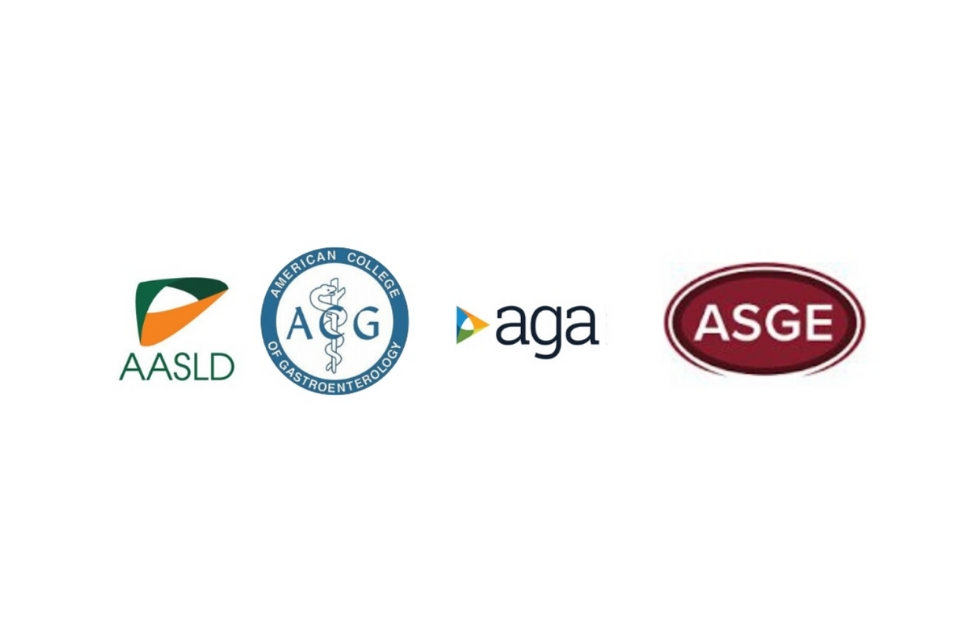Several strategies have been suggested to reduce the risk of infection transmission during gastrointestinal endoscopy. The following guidance provides a summary of what we know to date and our recommendations in regard to the use of personal protective equipment (PPE). This guidance is offered until more definitive data-driven guidelines become available. It is recognized that scientific evidence about the relative efficacy of individual protective measures is incomplete. Where recommendations are based on circumstantial evidence and expert opinion, the principle of putting the health and safety of GI providers first is being applied. Recommendations will require periodic updating as additional scientific evidence becomes available.
What we know
COVID-19 illness and infection risk
- Key symptoms of COVID-19 include cough and fever [1] but a significant number of patients can exhibit GI symptoms, including diarrhea [2,3].
- Infected individuals are infectious as early as 24 hours prior to symptom onset, and for at least five to six days thereafter [4].
- More than 40% of all SARS-CoV-2 infections may be transmitted prior to the index case becoming symptomatic [5]. Given this high rate of infection transmission from pre-symptomatic individuals, all patients undergoing GI endoscopy in an area of community-spread need to be considered ‘high risk’.
- The main route of virus transmission is via aerosolized droplets from the posterior pharynx and bronchioles of infected individuals; the possibility of fecal-oral transmission also exists [6].
- The risk of infection transmission is highest in the immediate vicinity of a COVID-19 patient. Cough-generated aerosol clouds can extend 1 to 2 meters from the patient [7]. SARS-CoV-2 virus particles can be deposited on surfaces where they may remain detectable for up to 72 hours [8], but the precise infection risk from surface contamination has not been determined.
- All endoscopic procedures should be considered aerosol-generating procedures (AGP) owing to the possibility of coughing and retching during upper endoscopy and the passage of flatus during colonoscopy [9]. In addition, all endoscopic procedures are at risk of generating aerosol and micro-droplets by the very design, function and leakage of the instruments, valves, ports, and air pressures during inflation and suction.
Effectiveness of protective measures
- Hand hygiene is of paramount importance. SARS-CoV-2 is an enveloped RNA virus that is readily inactivated by proper hand hygiene with soap and water, or hand sanitizers containing at least 60% alcohol. Compliance among health care workers with proper hand hygiene needs to be emphasized and practiced [9, 10].
- Surgical masks are made of non-woven fabrics with pore sizes of 20-25 μm and are designed to prevent large aerosolized droplets from being expelled from the upper airways of an infected individual during coughing and sneezing. They fit loosely, with significant airflow occurring around the edges of the mask [11]. They are not designed for use as particulate respirators and do not provide as much protection as an N95 respirator [12].
- N95 respirators are designed to prevent the wearer from inhaling small airborne particles. They are fitted tightly to the wearer’s face to limit facial seal leakage. They are rated to filter at least 95% of particles 300nm or larger in laboratory testing [13].
- While superiority of N95 respirators over surgical masks for the prevention of transmission of respiratory viruses has been difficult to demonstrate in randomized controlled trials, these studies are underpowered and fraught with numerous methodological flaws. Given the high filtration rate of N95 respirators, there is ample reason to believe that these devices, if worn consistently and correctly, provide a higher level of protection compared to surgical masks [14].
- Other respirators include N99s which exhibit filtration rates of greater than 99% of airborne particles. Their superiority compared to N95 respirators has not been consistently demonstrated. Powered air-purifying respirators (PAPR) consist of a partial or complete hood and a powered fan, which drives incoming air through a filter. PAPRs provide for a better seal in bearded individuals and may be more comfortable to wear for a prolonged period of time, but they are not widely available.
- A full set of PPE includes gown, gloves, hair cover and eye protection (goggles or face shield) [15,16]. Waterproof aprons should also be used if gowns are not fluid resistant.
Recommendations
- 1. General measures of physical distancing and adequate hand hygiene are of critical importance and need to be practiced diligently, independent of other protective measures.
- 2. All elective, non-urgent procedures should be postponed until ample supplies of PPE, hospital beds and other resources are available after the COVID-19 surge.
- 3. All members of the endoscopy team should wear a full set of PPE, predicated on resource availabilities.
- 4. The correct sequence of putting on and taking off PPE (“donning” and “doffing”) is critical and needs to be understood and practiced [17].
- 5. All members of the endoscopy team should wear N95 respirators (or devices with equivalent or higher filtration rates) for all GI procedures performed on patients with known SARS-CoV-2 infection and those with high risk of exposure. Given the high rate of infection transmission from pre-symptomatic individuals, all patients undergoing GI endoscopy in an area of community spread need to be considered ‘high risk’.
- 6. All health care workers should have their N95 respirators fitted by an occupational health specialist prior to the first usage.
- 7. Staffing of endoscopy rooms should be reduced to the minimum number of individuals necessary, in order to conserve PPE and other resources.
- 8. In some cases, shortages may require extended and limited reuse of N95 respirators. Guidance is available on how to wear, remove and store respirators to minimize contamination [18]. Decontamination of N95 respirators with hydrogen peroxide vapor has been approved by the FDA as a means of reuse in times of limited supply [19].
1. Huang C, Wang, Y, Li X, et al. Clinical features of patients infected with 2019 novel coronavirus in Wuhan, China. Lancet 2020;395:497-506.
2. Gu J, Han B, Wang J. COVID-19: Gastrointestinal manifestations and potential fecal-oral transmission. Gastroenterology. 2020 Mar 3. pii: S0016-5085(20)30281-X. [Epub ahead of print] https://doi.org/10.1053/j.gastro.2020.02.054
3. Pan L, Mu M, Yang P, et al. Clinical characteristics of COVID-19 patients with digestive symptoms in Hubei, China: a descriptive, cross-sectional, multicenter study. Am J Gastroenterol 2020; March 18, online.
4. Ferguson NM, Laydon D, Nedjati-Gilani G, et al. Impact of non-pharmaceutical interventions (NPIs) to reduce COVID-19 mortality and healthcare demand. Imperial College London, UK, 2020; March 16, online. DOI: https://doi.org/10.25561/77482.
5. He X, Lau EHY, Wu P, et al. Temporal dynamics in viral shedding and transmissibility of COVID-19. medRxiv 2020; March 15. DOI: https://doi.org/10.1101/2020.03.15.20036707
6. Wu D, Wu T, Liu Q, Yang Z. The SARS-CoV-2 outbreak: what we know. Int J Infect Dis 2020; March 5, online. DOI: https://doi.org/10.1016/j.ijid.2020.03.004
7. Bouroulba L, Dehandschoewercker E, Bush JWM. Violent expiratory events: on coughing and sneezing. J Fluid Mech 2014;745:537-563.
8. van Doremalen N, Morris, DH, Holbrook MG, et al. N Engl J Med 2020; online DOI: 10.1056/NEJMc2004973
9. Soetikno R, Teoh AYB, Kaltenbach T, et al. Considerations in performing endoscopy during the COVID-19 pandemic. Gastrointest Endosc 2020; March 19, online.
10. Longtin Y, Sax H, Allegranzi B, et al. Hand hygiene. New Engl J Med 2011;364:e24.
11. Smith JD, MacDougall CC, Johnstone J, et al. Effectiveness of N95 respirators versus surgical masks in protecting health care workers from acute respiratory infection: a systematic review and meta-analysis. CMAJ 2016;188:567-574.
12. CDC. Respirator fact sheet. https://www.cdc.gov/niosh/npptl/topics/respirators/factsheets/respsars.html (accessed March 30, 2020).
13. Radonovich Jr LJ, Simberkoff MS, Bessesen MT. N95 respirators vs medical masks for preventing influenza among health care personnel. JAMA 2019;322:824-833.
14. Offeddu V, Yung CF, Low MSF, Tam CC. Effectiveness of masks and respirators against respiratory infections in healthcare workers: a systematic review and meta-analysis. Clin Infect Dis 2017;65:1934-1942.
15. Repici A, Maselli R, Colombo, M, et al. Coronavirus (COVID-19) outbreak: what the department of endoscopy should know. Gastrointest Endosc 2020; March 1, online.
16. World Health Organization. Rational use of personal protective equipment for coronavirus disease (COVID-19): interim guidance, 19 March 2020. https://apps.who.int/iris/bitstream/handle/10665/331498/WHO-2019-nCoV-IPCPPE_use-2020.2-eng.pdf
17. CDC. Example of safe donning and removal of personal protective equipment (PPE). www.cdc.gov/infectioncontrol/guidelines/isolation/appendix/ppe.html. (accessed March 28, 2020).
18. NIOSH: Recommended guidance for extended use and limited reuse of N95 filtering facepiece respirators in healthcare settings. https://www.cdc.gov/niosh/topics/hcwcontrols/recommendedguidanceextuse.html (accessed March 25, 2020).
19. Schwartz A, Stiegel M, Greeson N, et al. Decontamination and reuse of N95 respirators with hydrogen peroxide vapor to address worldwide personal protective equipment shortages during the SARS-CoV-2 (COVID-19) pandemic. Applied Biosafety 2020, March 27, online.












